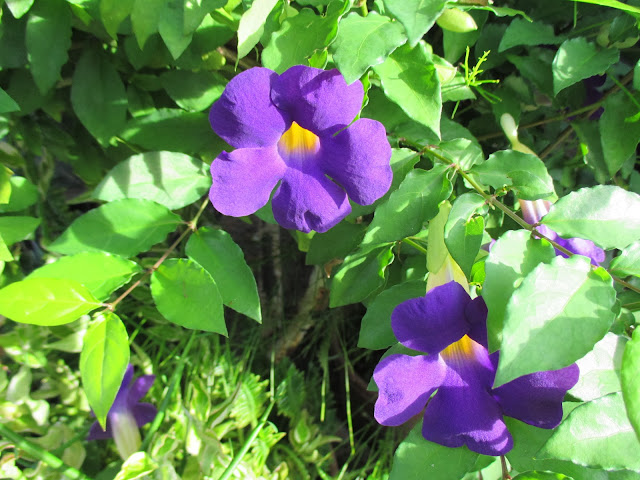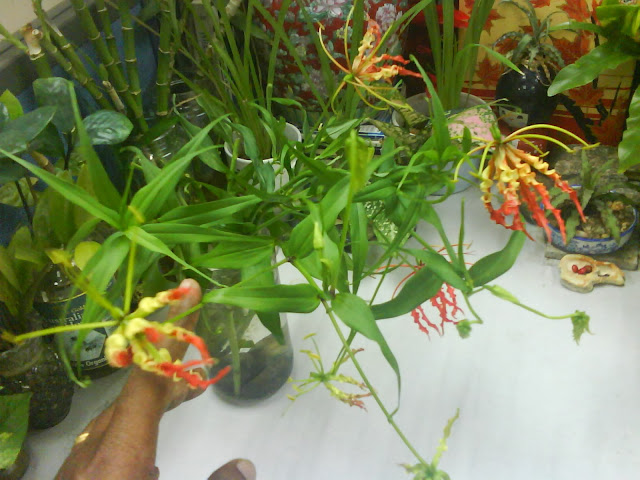I realised that these orchids tend only to bloom very close to year end.
Normally that takes place when it is raining continuously for 2-3 days in a row followed by an immediate hot & sunny days.
I must say that its truly unfair when I find that these seemed to bloom lavishly with multiple blooms, especially the ones that I had pasted my spares to most of my friends.
Regardless,
it did bloom in my garden and I'm still enjoying them during these few days.
I suspect this flower (usually it suppose to be more than one)
would last about few days to a week. It bloomed again couple of months back and I was too late to get the picture on camera.
The flower was not so glorious as this - it had a bud blast - prematurely dropped its bloom without opening when the rain season had started again without giving that sunny intervals.
The only thing I admire (or cause me to admire when I tell my friends)
are those spear like leaves.
Spanning like a blades cascading by the window plane.
The last two orchids were with me for few months back,
slowly coming out from dormancy.
I had not seen their blooms yet. Hopefully one day it would give me a surprise.
This is Bush Clock Vine.
I placed it closer to a shaded area and it rarely bloomed.
(not even one flower)
Here I placed it very close to my rose shrub and now it blooms profusely.
The only setback is that its very bushy and requires pruning time to time.
The blue with the yellow centre truly makes a whole plant screaming for attention.
I find that this plant is very much hardy and able to stand watering neglect.
(one reason is that its too far, spanned away to a distance where my watering hose can't reach the pot base)
I would like to take this opportunity to wish all my gardener friends and my blog readers:
A Wonderful Christmas and A Promising New Year!
May the Coming Year 2014 bring more Success and Promises..
and Hopes and Dreams that come to Fulfilment.
And that God Bless Your Hand
that whatever you touch - Prospers and turn Fruitful.
Have a Blessed Week ahead during this Festive Season.
MERRY CHRISTMAS AND A HAPPY NEW YEAR!!!












































































